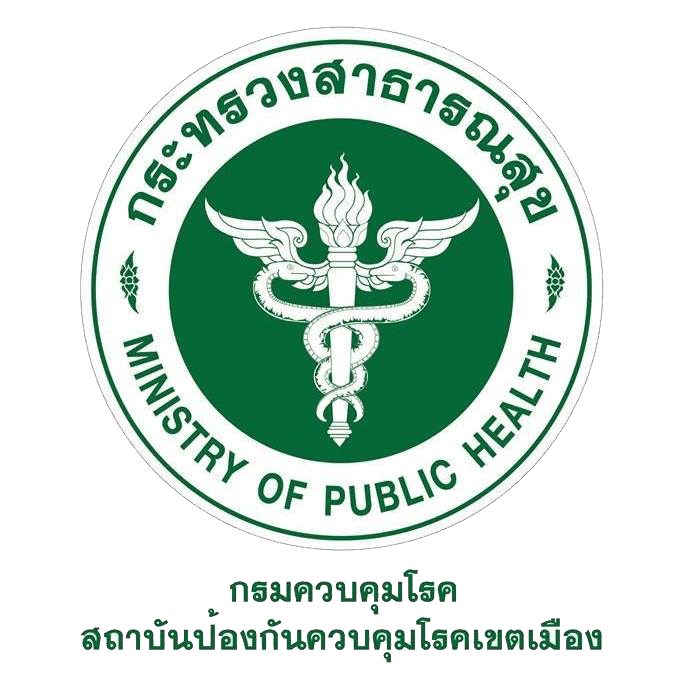การเปรียบเทียบลักษณะและผลการรักษาของผู้ป่วยโรคเรื้อนที่เป็นคนไทยและไม่ใช่ไทย ณ ศูนย์บริการโรคในเขตเมือง ปี 2551 - 2560
Main Article Content
บทคัดย่อ
ศูนย์บริการโรคในเขตเมือง เป็นคลินิกที่รักษาโรคเรื้อน ผู้วิจัยจึงสนใจที่จะศึกษาลักษณะและผลการรักษาผู้ป่วยโรคเรื้อนที่เป็นคนไทยและไม่ใช่คนไทย โดยมีวัตถุประสงค์เพื่อเปรียบเทียบความแตกต่างระหว่างคนไทยและไม่ใช่คนไทยในผู้ป่วยโรคเรื้อนที่มารับบริการ โดยเก็บข้อมูลย้อนหลัง 10 ปี จำนวน 68 ราย เครื่องมือที่ใช้ เป็นแบบบันทึกข้อมูลของผู้ป่วยโรคเรื้อนที่สร้างขึ้นจำเพาะ สอดคล้องกับแบบบันทึกข้อมูลที่ กรมควบคุมโรคใช้ในการบันทึก วิเคราะห์ใช้สถิติเชิงพรรณนาและสถิติเชิงวิเคราะห์ Chi-square และ paired t- test
ผลการศึกษา พบว่าตั้งแต่ปี 2551 - 2560 ผู้ป่วยคนไทย 59 ราย ร้อยละ 86.76 ไม่ใช่คนไทย 9 ราย ร้อยละ 13.24 ส่วนใหญ่ทั้งคนไทยและไม่ใช่คนไทย เป็น เพศชาย ร้อยละ 64.4, 66.7 คนไทยส่วนใหญ่อายุระหว่าง 56-65 ปี ร้อยละ 23.7 ไม่ใช่คนไทย 26-35 ปี ร้อยละ 33.3 ส่วนใหญ่มีอาชีพรับจ้างร้อยละ 52.5, 66.7 ตามลำดับ ภูมิลำเนามีความสัมพันธ์กับอัตราการป่วยของโรคเรื้อนคือผู้ป่วยไม่ใช่คนไทยอาศัยในพื้นที่ต่างประเทศและรองลงมาคือ จังหวัดปทุมธานี ร้อยละ 44.4, 33.3 ส่วนผู้ป่วยคนไทยอยู่ในกรุงเทพมหานคร และ จังหวัดปทุมธานี ร้อยละ 30.5, 25.4 ตามลำดับ ทั้งสองกลุ่มเป็นผู้ป่วยเชื้อมาก ร้อยละ 79.7, 88.9 ตามลำดับ ระยะเวลามีอาการก่อนมารักษา 1 - 5 ปี ร้อยละ 54.2, 55.6 ตามลำดับ มีรอยโรคทั้ง 2 ข้าง และรับยาเชื้อมาก โดยส่วนใหญ่ไม่มีภาวะเห่อ ร้อยละ 54.2, 77.8 ตามลำดับ ส่วนผู้ป่วยไม่ใช่คนไทยมีความสัมพันธ์ กับการแพ้ยาระหว่างรักษา ร้อยละ 11.1 (p < .05) ผลการรักษาครบทั้งคนไทยและไม่ใช่คนไทย ร้อยละ 76.3, 66.8 ตามลำดับ แต่อัตราการขาดยาในผู้ป่วยไม่ใช่คนไทย มากกว่าคนไทย 3 เท่า ร้อยละ 22.2 และ 6.8
สรุป ผู้ป่วยโรคเรื้อนที่ไม่ใช่คนไทยมีการแพ้ยา และอัตราการขาดยาสูงกว่าคนไทย จึงต้องมีการวางแผนติดตาม และศึกษาปัญหาอุปสรรคในการดูแลผู้ป่วยโรคเรื้อนที่ไม่ใช่คนไทย เพื่อลดการแพร่กระจายเชื้อสู่ชุมชน และลดการเกิดความพิการ ตามเป้าหมายการดำเนินงานควบคุมโรคเรื้อน
Article Details
บทความที่พิมพ์ในวารสารสถาบันป้องกันควบคุมโรคเขตเมือง ถือว่าเป็นผลงานวิชาการ งานวิจัยและวิเคราะห์ ตลอดจนเป็นความเห็นส่วนตัวของผู้เขียนเอง ไม่ใช่ความเห็นของสถาบันป้องกันควบคุมโรคเขตเมือง หรือคณะบรรณาธิการแต่ประการใด ผู้เขียนจำต้องรับผิดชอบต่อบทความของตน
เอกสารอ้างอิง
ธีระ รามสูต, ฉลวย เสร็จกิจ. (2559). ระบาดวิทยาของโรคเรื้อนหลังการกำจัดโรคเรื้อนสำเร็จสมดังพระราชปณิธาน. ราชประชาสมาสัยสาร, ฉบับพิเศษ :27-37.
ธีระ รามสูต, ฉลวย เสร็จกิจ. (2559). ความก้าวหน้าของโครงการเฝ้าระวังและรักษาโรคเรื้อนในบุคคลและแรงงานต่างด้าว. ราชประชาสมาสัยสาร, ฉบับพิเศษ: 38-46.
ศิลธรรม เสริมฤทธิรงค์,พจนา ธัญญกิตติกุล. (2562). การประเมินประสิทธิผลโครงการกำจัดโรคเรื้อนภายใต้แผนยุทธศาสตร์โรคเรื้อน 5 ปี (พ.ศ. 2553-2557)และแผนยุทธศาสตร์โรคเรื้อน 6 ปี
(พ.ศ. 2558-2563) พ.ศ. 2561 เข้าถึงวันที่ 30 กันยายน 2562
http://thaileprosy.ddc.moph.go.th/site/research.html.
ศิลธรรม เสริมฤทธิรงค์และศิรามาศ รอดจันทร (2560, บทคัดย่อ). ศึกษาการรับรู้การตีตราต่อโรคเรื้อนและวัณโรคในบุคลากรสาธารณสุข จังหวัดชัยภูมิ. วารสารกรมควบคุมโรค ปีที่ 43 ฉบับที่ 3 ก.ค - ก.ย. 2560
สถาบันราชประชาสมาสัย กรมควบคุมโรค. (2552). แผนยุทธศาสตร์โรคเรื้อน 2553-2557. สมุทรปราการ.
สถาบันราชประชาสมาสัย กรมควบคุมโรค. (2553). คู่มือการวินิจฉัยและรักษาโรคเรื้อน (พิมพ์ครั้งที่ 8). กรุงเทพฯ: โรงพิมพ์สำนักพิมพ์พระพุทธศาสนาแห่งชาติ.
สถาบันราชประชาสมาสัย กรมควบคุมโรค. (2557). แผนยุทธศาสตร์โรคเรื้อน 6 ปี (2558-2563).
สมุทรปราการ.
สถาบันราชประชาสมาสัย กรมควบคุมโรค. (2561). สถานการณ์โรคเรื้อน 2507-2560. นนทบุรี
สุรพงษ์ กองจันทึก. (2554). การแก้ไขปัญหาแรงงานข้ามชาติควรเป็นอย่างไร. เข้าถึงได้จาก
http://www.statelessperson.com/www/?q=node/3019
กองนโยบายและแผนสำนักผังเมือง กรุงเทพมหานคร (2559). รายงานการศีกษาผลกระทบจากการให้บริการสาธารณสุขแก่แรงงานต่างด้าวของโรงพยาบาลในสังกัดกรุงเทพมหานคร.กรุงเทพฯ.
สํานักบริหารแรงงานต่างด้าว. วารสารสถิติจํานวนคนต่างด้าวที่ได้รับอนุญาตทํางานทั่วราชอาณาจักร ประจําปี ๒๕๕๘. กรมการจัดหางาน กระทรวงแรงงาน, ๒๕๕๙
ศิวิไล ชยางกูร.(2555) . แรงงานข้ามชาติกับความต้องการดูแลผู้สูงอายุในประเทศไทย. กรุงเทพมหานคร: มหาวิทยาลัยราชภัฎสวนสุนันทา.
ชัยรัตน์ เตชะไตรศักดิ์. (2561). ระบาดวิทยาของโรคเรื้อนในแรงงานต่างด้าว อพยพเข้ามาในประเทศไทย ปี พ.ศ. 2541 - 2559. วารสารสมาคมเวชศาสตร์ป้องกันแห่งประเทศไทย,ปีที่ 8 ฉบับที่ 1
มกราคม-เมษายน 2561:1-13.
World Global Burden of disease: 2004 update. Geneva, Switzerland: World Health Organization, 2008. 2.
Jones KE, Patel NG, Levy MA, et al. Global trends in emerging and remerging disease. Nature, 2008; 451: 990-995.
Disease Buden due to Leprosy (Plan Period: 2011-2015). New Delhi. (2015). Global Leprosy Strategy 2016-2020.
Retrieved from: http://www.who.int/lep/resources/9789290225256/en/.
Diana L. (2012). Drug-resistant leprosy: Monitoring and current Status. Lepr Rev, 83:269–281.
ILEP. (2001). The Interpretation of Epidemiological Indicators in Leprosy. London.


